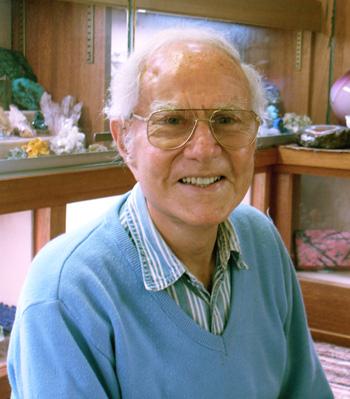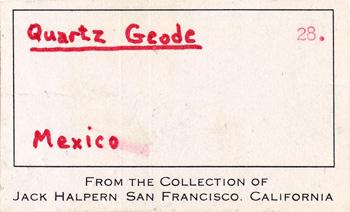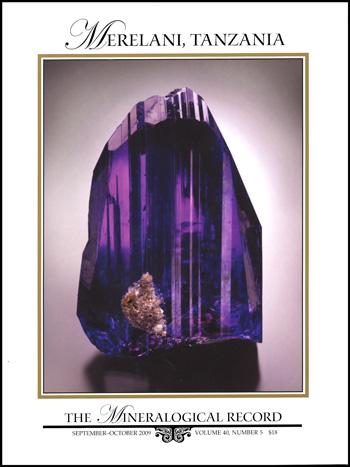Halpern, Jack (1920- )
Jack D. Halpern was born in Brooklyn, New York on May 18, 1920, the son of Jewish immigrants Cecile (from Russia) and Ralph Halpern (from Romania), the proprietor of a stationery store. Although he was raised in Brooklyn, Jack was not yet a mineral collector in those days, and never crossed paths with Jack Boyle, Neal Yedlin, Lou Perloff and the rest of that early group of Brooklyn mineral enthusiasts.He attended New York University and graduated in 1941 with a degree in Accounting—-a profession he was never to practice, because a few days later the Japanese bombed Pearl Harbor. Jack enlisted in the Navy as a seaman second class and was sent for six months to a radar school that had been set up on Treasure Island in San Francisco Bay. It was in that beautiful city that he met his future wife, Leslie Baer, and when he was later transferred to the MIT Naval Training Center in Boston as an instructor in radar navigation (the LORAN system) she traveled to join him and they were married in 1943.
Jack ultimately left the Navy at the rank of Lt. Commander and taught radar navigation for the U. S. Maritime Service until 1954 (when that training program was ended), then spent the rest of his working career as a salesman for UARCO, a business forms manufacturer; he retired in 1982. Jack and Leslie lived their married life together in San Francisco, and were blessed with two daughters, Jean and Lynn. Sadly, Leslie died in 1995—she was some years older than Jack—and he still speaks fondly of her.
In his own words Jack was "reborn" in San Francisco around 1962, when he toured for the first time the mineralogy department at the California Academy of Sciences. He was transfixed by the sight of attractive and brightly colored objects in a myriad array of geometric shapes. Unwilling at first to believe they were not man-made, it was only after a lengthy interrogation of a museum staff member that Jack came to realize that crystallized minerals are completely natural.
The academy gentleman put Jack in contact with Dr. William Sanborn, who took him to local mineral shows, introduced him to dealers and taught him the difference between fine specimens and also-rans. Later in the 1960s Jack met another prominent connoisseur who would mentor him on his way to becoming a world-class collector: Peter Bancroft. Having the help of a good mineral dealer is also critical in starting a collection, and Jack had the good fortune to make the acquaintance of Walt Lidstrom -- a legend in the mineral business, for his kindness, his square dealing, and the high quality of his specimens. For the first 15 years that Jack worked at building his collection, he purchased 99% of his specimens from Walt.
Jack's collection currently numbers about 3,200 meticulously documented specimens covering most sizes, from thumbnails to very large cabinet pieces. He has many species, not just the most popular twenty or thirty that you see at mineral shows, although he does not go in for extreme rarities. His specimens run the gamut from modest to elite, all exhibited together in 14 packed display cases; included is the big tanzanite crystal that won Jack the Lidstrom Award at the Tucson Show in 2007. Always happy for the chance to socialize with other collectors, Jack is a member of the informal group of San Francisco mineral collectors called the Crystal Gazers.
As part of his philosophy of appreciating beauty wherever it is found, Jack also has a passion for raising roses and orchids. He is a a founding member of the Golden State Lily Society, and a former president of both the San Francisco Orchid Society and the San Francisco Rose Society.
Click to images to view larger
To contribute more information please E-mail us at:
minrecord@comcast.net
Citation format for this entry:
WILSON, Wendell E. 2022
Mineralogical Record
Biographical Archive, at www.mineralogicalrecord.com
minrecord@comcast.net
Citation format for this entry:
WILSON, Wendell E. 2022
Mineralogical Record
Biographical Archive, at www.mineralogicalrecord.com




